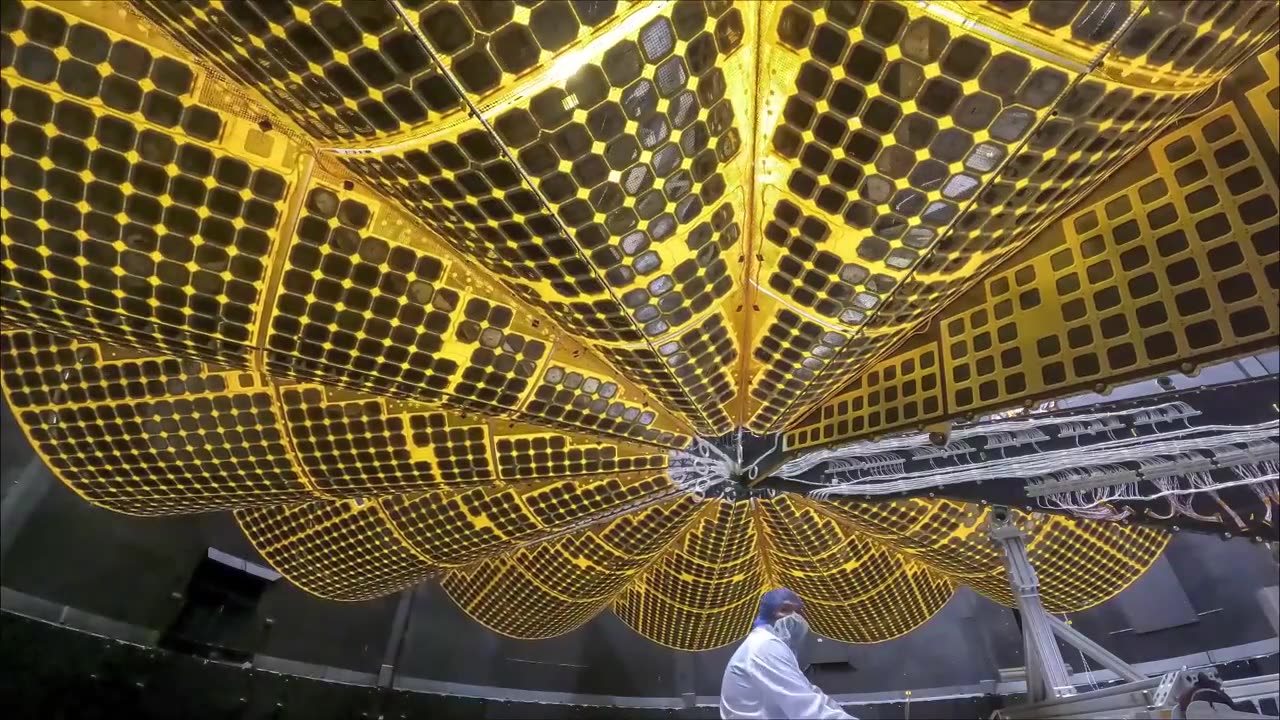Premium Only Content

"NASA's Lucy Mission Extends Its Solar Arrays"
"NASA's Lucy Mission Extends Its Solar Arrays" signifies a significant development in the ongoing space exploration endeavor known as the Lucy Mission. Lucy, led by NASA, is a mission designed to explore and study a diverse group of asteroids known as Trojan asteroids, which are located around Jupiter's orbit. This recent update highlights the mission's successful extension of its solar arrays, which are critical for powering the spacecraft during its deep space journey and scientific investigations.
The Lucy Mission aims to provide valuable insights into the early formation and evolution of our solar system by studying these ancient remnants of planetary building blocks. The Trojan asteroids are intriguing targets because they are believed to be remnants from the outer regions of the solar system that were captured by Jupiter's gravitational influence. By studying their composition, characteristics, and orbital dynamics, scientists hope to uncover essential information about the conditions that prevailed during the solar system's infancy.
The extension of Lucy's solar arrays is a crucial achievement that ensures the mission's continued functionality and success. Solar arrays are essential for generating electrical power from sunlight, which is necessary for operating the spacecraft's instruments, communication systems, and other onboard equipment. The extension of the solar arrays enables the spacecraft to capture more sunlight and generate sufficient power even as it travels farther away from the Sun and into the deeper reaches of space.
This development marks a significant milestone in the Lucy Mission, as it guarantees that the spacecraft will be able to fulfill its scientific objectives without interruptions. With its extended solar arrays, Lucy will be able to gather data, capture images, and transmit valuable information back to Earth as it conducts its comprehensive survey of Trojan asteroids.
"NASA's Lucy Mission Extends Its Solar Arrays" reflects NASA's commitment to pushing the boundaries of space exploration and ensuring the success of missions designed to expand our understanding of the cosmos. It underscores the collaborative efforts of scientists, engineers, and mission operators to overcome challenges and achieve scientific milestones that contribute to our knowledge of planetary science and the history of our solar system.
-
 LIVE
LIVE
Badlands Media
8 hours agoThe Narrative Ep. 35: Codex of Truth
5,713 watching -
 LIVE
LIVE
Due Dissidence
11 hours agoSchmuley TRASHES Shapiro, Maxwell Sings For Pardon, Uhuru Doc Preview - Live From St. Louis!
1,157 watching -
 LIVE
LIVE
Lofi Girl
2 years agolofi hip hop radio 📚 - beats to relax/study to
204 watching -
 LIVE
LIVE
PandaSub2000
5 days agoLIVE 9:30pm ET | MADISON VR (The Scariest Game Ever Made)
98 watching -
 2:34:32
2:34:32
Badlands Media
4 days agoCODEX 9/11
253K188 -
 1:53:43
1:53:43
Nerdrotic
5 hours ago $0.24 earnedMysteries of 3I/ATLAS | Forbidden Frontier #113
35.1K4 -
 2:04:21
2:04:21
vivafrei
1 day agoEp. 278: D.C. Peace Wave! Big Tish & Nipple Judge SPANKED! "Maryland Man" Trafficker FREE & MORE?
79.1K93 -
 LIVE
LIVE
Damysus Gaming
1 hour agoBorderlands 3 - Part 8 - FL4K Time | Children of the Vault be Warned!
50 watching -
 LIVE
LIVE
Patriots With Grit
5 hours agoWhat You Should Know About Harmful Vaccine Ingredients And What To Say To Your Doctor, Pediatrician, Health Department or School When They Pressure You, Your Kids Or Your Family Members | Dr. Bryan Ardis, D.C.
300 watching -
 LIVE
LIVE
This is the Ray Gaming
1 hour agoSunday Night Live with the Boys | Rumble Premium Creator
37 watching